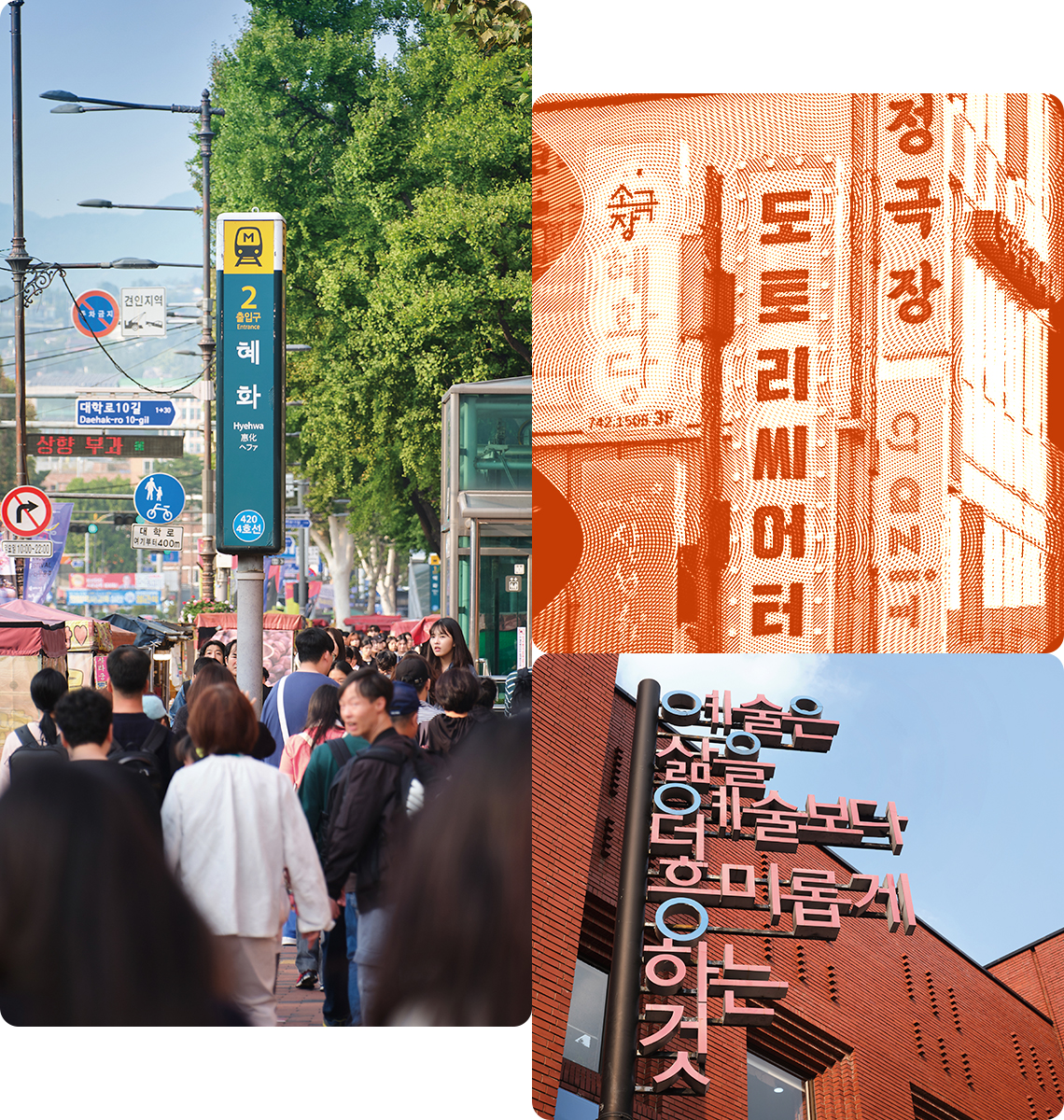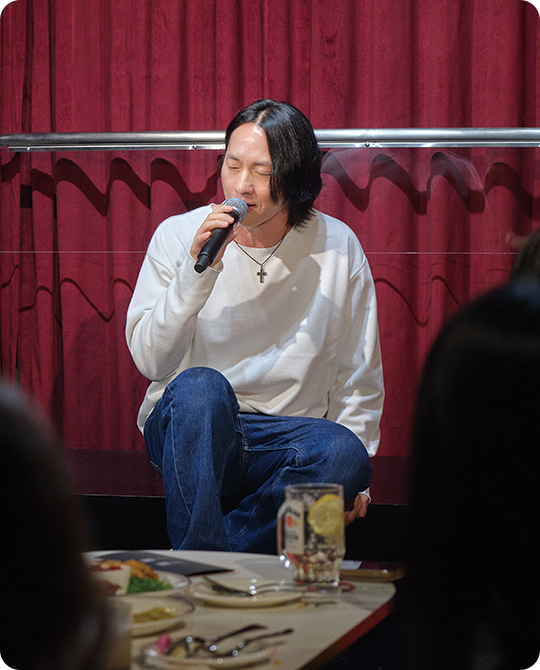Hyehwa-dong in Jongno-gu District, Seoul, and especially the area known as Daehakro, is the birthplace of Korean musical culture. This vibrant neighborhood is alive with the many large and small cultural spaces that have nurtured Korean musical traditions. The area’s energy is further fueled by people of all ages who flock to enjoy the diverse performances and rich world of artistic works that unfold in these cultural venues.


Writer. Kim Da Un
A Musical Adventure in Daehakro
In Hyehwa-dong, a 20-minute subway ride from Seoul Station, is an area known as Korea’s Broadway: Daehakro. The name means “university street,” and Daehakro has long been a hub for young people, performing arts and youth culture. Since 1979, artists have flocked to the area, and small theaters have opened one after another, making Daehakro a mecca for Korean musicals. It has produced some of Korea’s most famous actors, including Sul Kyung-gu, Kim Yoon-seok, Cho Seung-woo and Hwang Jung-min.
As of 2023, Daehakro boasts about 100 small theaters that host over 1,200 productions annually. You’re guaranteed to catch a show if you visit. Weekday evenings are busy, while weekends see dozens of productions running simultaneously in different theaters, regardless of the time of day. If you have a specific play in mind, go directly to the theater that is hosting it. Otherwise, enjoy strolling through Daehakro’s alleyways, perusing posters and casting boards outside theaters of all sizes, and choosing a show on the spot.

For comprehensive information on Daehakro performances, visit the Seoul Foundation for Art and Culture Daehakro near Hyehwa Station Exit 1. It displays posters of various musicals and offers free art books on performance culture. The center’s elegant interior and exterior spaces are open to the public, so feel free to stop by anytime.
In between Daehakro’s unique cafes and restaurants, explore venues such as Muha Art Center, TOM THEATER, LINK ARTS CEN TER, JS Art Hall, Yegreen Theater, Seokyeong University Center for Culture & Arts and Dongdeok Women’s University Performing Arts Center. Choose a performance that appeals to you. However, if you’re new to the scene, navigating the area to find a well-equipped theater with quality productions can be overwhelming.
The Hongik DAEHANGNO Art Center has a large 702-seat theater and a small 150-seat theater that rivals Seoul’s major venues. It offers a wide variety of musicals, from big productions to smaller works. The intimate setting ensures that even those in the back rows can enjoy the performances. Shows run daily except Mondays in both theaters, making it a reliable choice any day of the week.

Currently, the musical “Buchihanan” is playing at the Hongik DAEHANGNO Art Center until Nov. 17. It is set in neighborhood alleys and a legendary desert, and uses the latest stage technology. In a world first for musicals, a giant whale hovers above the audience, while immersive video and lighting blur the lines between virtual and real worlds. Actors Jung Taek-woon, Yoo Young-jae and Noh Yoon lead the cast, showcasing their exceptional acting and singing talents. For a magical theatrical experience, “Buchihanan” is a must-see.
Across the street from the Hongik DAEHANGNO Art Center is the ARKO Arts Theater, another Daehakro highlight. This charming red brick building houses a 600-seat large theater and a 96-seat small theater. Further down in the small theater district is the Daehakro Arts Theater, run by the same organization. This well-equipped, medium-sized public venue excels at presenting experimental works that are rarely seen elsewhere. In addition to musicals, it also presents concerts, dance performances and various other genres, making it worth a visit for any arts enthusiast.


A Place of Novel Encounters
Daehakro offers more than just traditional theater experiences. Take “Curtain Call,” a musical pub where patrons can enjoy performances while eating and drinking. Its casual atmosphere has made it a local favorite.
Beyond the combination of music and cuisine, Curtain Call’s unique appeal lies in its immersive layout. With a capacity of only 66, the entire space becomes a stage. Actors weave between tables and perform on platforms that minimize the distance between them and the audience. State-of-the-art lighting illuminates the aisles, while a sophisticated sound system brings the actors’ voices to life. Patrons rave about the intimate experience, which allows them to appreciate the performers’ skills up close.
Unlike traditional theaters, Curtain Call encourages audience participation. Guests are free to videotape and openly share their reactions. For these reasons, Curtain Call is a top recommendation for newcomers to musical culture. Despite the relaxed atmosphere, patrons often feel transported to the heart of a production, fully immersed in the performance. The venue is open Thursday through Sunday. Thursdays and Fridays offer two one-hour shows at 7 p.m. and 9 p.m. Saturdays and Sundays offer four performances at 2 p.m., 4 p.m., 7 p.m. and 9 p.m. To secure a seat, book in advance via Instagram or the website, as tickets are often scarce at the door.
Performances rotate seasonally. While ensemble pieces remain consistent within a season, solo performances can vary. Each performer’s repertoire changes, ensuring a unique experience even on repeat visits within the same season. Special guest appearances add an element of surprise to some shows. Recently, Michael Lee and Kim Bo Kyung, world-renowned musical actors from “Jesus Christ Superstar,” performed on stage.
With its array of captivating venues, Daehakro remains an iconic hub for Korean musicals. For those who want to experience the vibrant pulse of Korean musical theater, Daehakro is the place to be.


